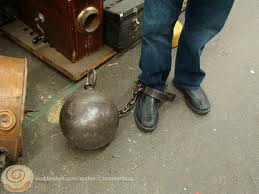Part 3: MMJ limits job incubation to a fraction of what it could be
During most of mankind’s 200,000-year existence on Planet Earth, only a handful of jobs were on offer. Hunter, gatherer, chief, child rearer, healer, and shaman were among the few available positions. Hunters served double duty as soldiers.
About 10,000 years ago, when agriculture as we know it became viable, farmer was added to the list. Additional jobs like butcher, baker, chef, leather fashioner, arrow maker, and blacksmith began appearing. Soldier separated from hunter. More and more jobs became identifiable over the coming millennia.
But it wasn’t until the 19th century AD, when the Industrial Revolution kicked in, that the depth and breadth of jobs on offer really took off. In the 20th century, aided by the census and computers, governments began compiling statistics for how many jobs were created and lost in, say, the entire United States, in any given time period.
If a lot of jobs were incubated, that was good for an unseen yet ever-present force known as “the economy.”
If numerous jobs were lost, while very few jobs were “won,” that was bad for the economy.

Want a white collar, managerial kinda cannajob? You don’t have a problem toting this around, do you?
Minor drawbacks like black lung disease aside, “blue collar” mining and manufacturing jobs were good. “White collar” jobs were even better. They raised everyone’s “standard of living” and provided “discretionary income” — money to spend on disposable goods no one really needed that “grew the economy.”
More recently, the information technology sector incubated hundreds of thousands of white-collar jobs in the 90’s. That was universally applauded as a really positive development. Alas, the IT bubble burst. Eventually, it was replaced by . . . nothing much.
By 2011, depending on where you happened to look, the now all-too-well tracked unemployment rate had either approached historic highs or shot right past them.
Coincidentally, in 2008, when the economy soured like an overturned milk tanker, MMJ retail began receiving quite a bit of publicity from every form of communication and media known to man. There seemed to be considerable demand for the product — a wacky weed, which was also a magical herb, that made people feel a lot better physically and mentally than they felt before they ingested it. Workers disgusted with their jobs, positions that were becoming increasingly expendable or interchangeable, yearned to break into cannabis commerce. It offered a fresh start in a field they loved.
But unusual forces were afoot. Large portions of the populace were not embracing this fabulous new source of jobs in a putrid economy. Curiously, the same citizens and their elected legislators who accepted the retail presence of alcohol, tobacco, and prescription drugs recoiled at the mention of free cannabis enterprise. The government gave no indication it wanted to help the nascent industry. Quite the opposite. It only rubber-stamped cannabis commerce shoehorned into a limited and ill-fitting role as medical marijuana provider for patients’ needs. That service had been historically handled perfectly well by pharmacies.
Recreational and industrial use were not even in the discussion.
In fact, so many people wanted to work in cannabis commerce, the Colorado Department of Revenue put a moratorium on opening any more dispensaries. Let’s review: the state desperately needed jobs, cannabis commerce provided them, then, instead of raising the drawbridge, the DOR poured hot boiling oil over the pilgrims who came to the gates of the city seeking gainful employment.
In addition to the industry-wide moratorium, an inventive series of restrictions, limitations, and regulations insured that job incubation for the MMJ industry, what there was of it, would be strapped with a burden no other industry in the history of mankind has ever had to bear.
Speaking of being strapped with a ball and chain, even the slave industry was part of the free enterprise system at one time. Why do I mention that? It means that cannabis commerce in 2011 doesn’t even rate the same respect the human bondage industry was accorded in 1860. That’s how low people seeking cannajobs are treated in MMJ states.

What? You don’t like towing around a bowling ball at work? Your work ethic isn’t strong enough. Malingerer!
Why have cannajobs been fitted for a ball and chain?
Your MMJ state voted for it.
Everyone who voted for MMJ instead of repealing prohibition probably didn’t realize they gave tacit approval to limiting, constricting, and fettering cannajobs — at a time jobs are needed desperately. But that’s essentially what’s transpired. There were no cautionary tales provided for the voting public like this one. No one knew what they were inviting into their lives.
Here’s the gist of it, condensed into a sentence:
MMJ = endless legislative wheel spinning in a nanny state restricting growth; MJ = free enterprise as the founding hemp farmer fathers intended.
When free enterprise flows, conditions become ripe for job incubation. When the spigot is turned off, hypocrisy reigns.
The following is not what the founding hemp fathers intended:
- You open a shoe store . . . but you can only sell shoes to customers with plantar fascitis. You wouldn’t have to hire an additional salesperson or three, would you?
- You open a liquor store . . . but you can only sell liquor to people with prescriptions for exotic spirits like Grand Mariner. You wouldn’t have to staff a superstore, would you?
- You open a gas station. But you can only sell gas to owners of foreign imports manufactured before 1995. You wouldn’t need two cashiers to process the credit card transactions, would you?
All those examples are bastardizations of the free enterprise system. Yet for retail MMJ, it’s par for the course:
- You open an MMC. But you can only sell to a minute fraction of all the people who want to buy.
So, my fellow Americans [and curious internationals], and specifically my fellow Americans in the 16 MMJ states [as of June, 2011], here’s that refrain, sprayed in skywriting, one more time:
The government didn’t do this to you without your permission, you gave it permission to limit cannajobs to a fraction of what they could be when you voted to become MMJ states instead of repealing prohibition.
That’s what is.
Let’s take a closer look at how MMJ restricts cannajobs:
- 34 states have no MMJ at all. So there’s no need for cannajobs. In two-thirds of the country, you can’t even earn an hourly wage trimming buds.
- Each city and county in MMJ states can choose to allow or not allow MMCs [medical marijuana centers including dispensaries, clubs, co-ops, and collectives]. Many of them pass. That eliminates fifty percent or more of the potential cannajobs within a given state.
- Each city and county in MMJ states can choose to limit the amount of MMCs operating. Plenty of them do exactly that. That reduces the amount of cannajobs once again.
- Not everyone feels like fabricating an illness in order to obtain a state “red card” [license to purchase MMJ]. That means less cannaworkers are needed to serve the needs of people hesistant to tell a recommending physician, “I have a fragile ego which could decompensate from the stress of having poison ivy on prom night, 1992.”
- Many people with “legitimate” maladies are reluctant to apply for red cards. It’s a real fear that they will encounter professional and personal repercussions if their “terrible secret” is outed. That makes even less “patients” for cannaworkers to serve who would happily transact if MMJ wasn’t a model of hypocricy.
- Bizarre, ever-changing regulations discourage growers, thinning their ranks.
Any way you guesstimate it — there are no hard statistics available for who’s not working in the MJ industry — it would appear that maybe one out of thirty people who want to work in cannabis commerce can.

“Sitting down by my window, Whoa, whoa, looking at the rain. Whoa, down by my window, baby, And all around me, I said suddenly I felt the rain. Somethin’ grabbed a hold of me, darling, Honey, it felt to me, honey like, yeah, a ball and chain.”
Space and time prohibits more precise predictions for the number of cannaworkers and cannamanagers there would be in a fully legal, regulated landscape — though this has the makings of a juicy Cannabis Commerce report for another day. It goes without saying that the cannajobs incubated would provide quite a boost for our moribund economy.
One area where cannajobs have flourished is in the burgeoning field of cultivation supplies which includes nutrients, lights, temperature and humidity control devices, and indoor grow enclosures. These can be sold across state lines. They are not subject to the vagaries of MMJ law, as they can be used to grow tomatoes or any other plant.
So, wither cannabis commerce? Will it become the next big industry — or remain a cottage industry like needlepoint supplies or lawn bowling equpiment?
Find out next, as we explore cannabis’ contribution to Gross National Product, as it desparately attempts to wriggle out from under MMJ’s thumb.
Table of Contents:
Part 1: Dynamic MMJ laws force businesses onto the streetPart 2: MMJ limits cannatax to a fraction of what it could be
Part 3: MMJ limits job incubation to a fraction of what it could be
Part 4: MMJ limits cannabis' contribution to GDP to a fraction of what it could be
Part 5: Ironically, MMJ blocks clinical research into cannabis’ healing properties
Part 6: It's taking the tranquilizing drug of gradualism
Part 7: The foot-in-the-door theory is flawed
Part 8: Emphasizing MMJ in the present pushes true legalization back to the future
Part 9: MMJ trivializes recreational and industrial use
Part 10: Fuck the patients
[Bonus] Part 11: It keeps 45,000 pot "offenders" imprisoned
[Bonus] Part 12: It keeps the DEA in business
[Bonus] Part 13: Cities and counties can vote it out anytime







7 comments
Thomas Chong says:
Jul 25, 2011
You must remember medical marijuana has opened the door that can never be shut again so rather than oppose or criticize the the “medical approach”, embrace it. The truth is we all smoke for a medical reason whether we know it or not. Stress relief is probably the number one “medical” reason we healthy people smoke it. “It relaxes me”. ” Helps me enjoy my time off” or helps me enjoy doing boring things. Airline pilots use it for long flights. Athletes use it to wind down after a hard game or practice. Stress relief. But the most compelling argument has to be the “take it or leave it” qualities. Pot is not physically addicting. Studies have shown people who smoked for years can and have stopped cold turkey with no physical side effects. And the good news is stopping a heavy pot habit can be beneficial to ones well being. So don’t get cute and knock the medical approach and realize the number one harmful addiction in America is junk food.
This addiction is killing Americans faster than drunk drivers. Over eating leads to heart problems, diabetics, and a host of other ailments that is encouraged by our so-called American culture of television ads and sit/coms that promote unhealthy habits as a way of life rather than a way of death. Pot, hemp, cannibis was given to us by our Creator when the Universe was created.”I give thee Green Herb and it shall be for meat” Genesis 29. And it was the disgraced President Nixon who gave us the DEA criminal gang and the money draining drug laws. So lets support the medical approach toward pot and educate the masses about the many ills pot can help with instead of trying to be ultra clever with the outlaw comedian approach….tc
Lory Kohn says:
Jul 25, 2011
I could take exception to several of your points. However, you are the co-author of the immortal lines:
mama try to tell me
try to tell me how to live
but I don’t listen to her
cause my head is like a sieve
So you can write whatever you want, whenever you want to write it, and I’ll be grateful for the contribution. Thank you for taking the time to comment.
Don McAdams says:
Oct 15, 2011
Len Richmond’s movie is excellent. Under your picture of the youtube video, you state that, “Schedule 1 drugs can’t be tested on humans.” This is actually not the case. NIDA has a mandate that no Schedule 1 drugs can be tested for any benefits, but tests for potential harm are ran all the time. For a host of research, I recommend, well, Len Richmond’s movie. As something just as valuable, if not more so, is this 20 minute seminar from Dr. Abrams, http://projectcbd.org/Medicine.html#CME . He has over 30 years of NIDA funded MJ research that he talks about, as well as other research being done around the world, Dr. Guzman’s work from Spain being the most ground-breaking to date, mitigating glioblastoma multiforme, or brain tumors. Then I would suggest Dr. Tashkin’s NIDA funded 30+ year study confirming no link to MJ and lung cancer – it even suggested a protective effect from the cigarette smokers. I agree with Tommy Chong and Jack Herer – all use is medical. That being said, the MMJ initiatives may have a huge flaw of not offering enough, especially in the way of research, but it was a necessary step. We would never be talking about full legalization or repealing Prohibition 2 in a serious tone today if it wasn’t for the MMJ road paved for US. And yes, certain indicas high in CBD are better for physical treatments, while sativas high in THC and THCV are better for mental treatments, so recommended strains for the ailments isn’t entirely voodoo… You do bring up a necessary reminder for US all, though – no matter if we’re doing a medical or recreational attempt, research should always be included in the wording…
Lory Kohn says:
Oct 19, 2011
I disagree with your theory that MMJ is paving the way for full legalization, as opposed to blocking it — but respect your opinion. More on this soon. btw, is cannabis effective against spam?
Don McAdams says:
Oct 25, 2011
There is some truth that if Cali would have fully legalized cannabis in ’96, we could likely have 16 legal states today instead of medical states. The growing plethora of medical research could very likely have kept cannabis in a medical box for some time, and may have slowed the repeal / legalize progress. Considering how rigid the government still is on “legalizing,” though, medical really was (and unfortunately still is for the most part) the best avenue to get some freedom. I agree that there needs to be a break from medical to legal, and that would have been nice to see happen already. I believe that its lack of harm and vast medical efficacy will create a rapid shift from medical to repeal very soon, though, and that, almost unarguably, would have never been possible had cannabis not been a hot topic already these past several years, and that would have never happened without mmj initiatives being passed by the People. Perhaps it’s not really a paved road. It’s more like a dirt trail, and we need to get on the interstate. I agree with your sentiment of abandoning the medical model now, that time has come, but it’s not as easy to say for the 34 states that have no mj allowances… Our legalization init is lagging in Ohio, and still has all the hoops to get through yet, while the medical init here has jumped through the last hoop and is now collecting the half million signatures needed to get it on the ballot for 2012. I’m still gonna support both efforts, even though I have no qualifying medical condition…
Lory Kohn says:
Oct 25, 2011
Don, thanks for providing those links and sources to the groundbreaking research that has been performed.
You seem to like to write a bit — how’s about writing an article for CC clarifying what research can and can’t be performed on Schedule One drugs in the USA, and perhaps contrasting those regulations with international regulations?
I will admit that there have been benefits that have evolved from the flirtation with MMJ. For example, it has really pushed the envelope in medibles. I’ll be at my “caregiver,” Evergreen Apothecary today, listening to customers’ tales of how medibles have been helping them with their conditions, a variation on the “treat yourself” theme …
air jordan 11 says:
May 27, 2016
I want to say – thank you for this!